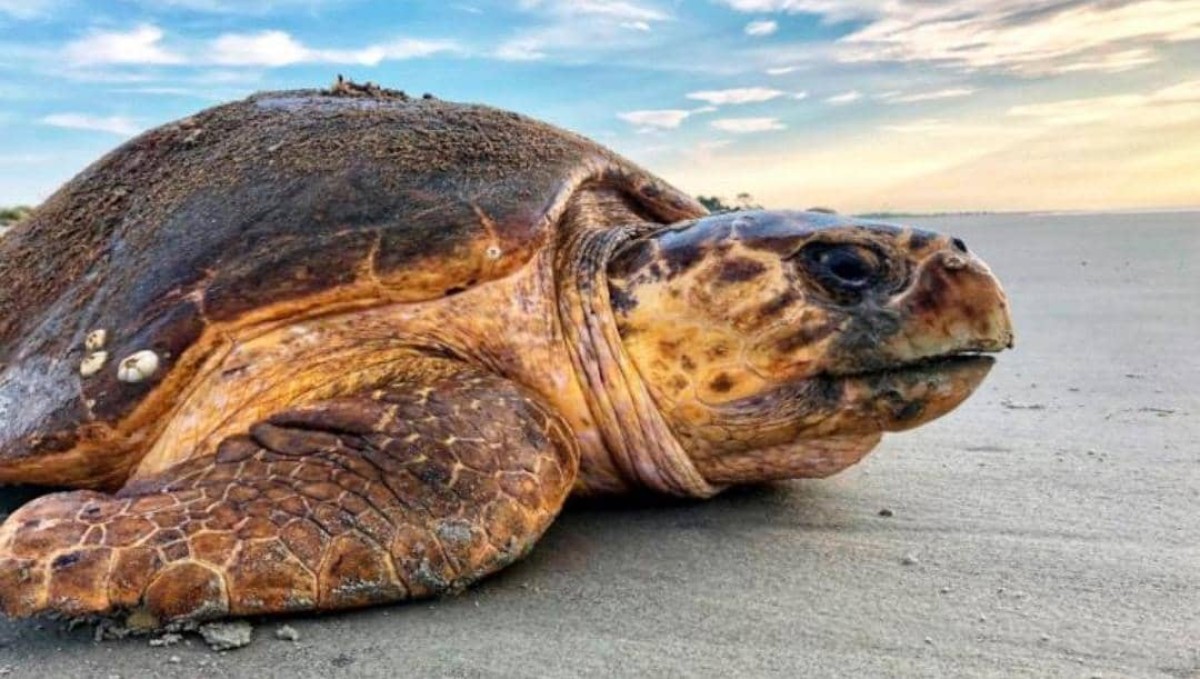Male turtles face extinction in Yemen


Male turtles in Yemen face the risk of possible extinction in light of climate change that has led to rising temperatures.
According to Agence France-Presse, turtles, which are among the most important creatures in the world, face the same danger in many regions of the world.
Male deficiency
Hafeez Kalshat, a volunteer to protect sea turtles from the people of Al-Ghaydah, the capital of the Yemeni governorate of Al-Mahra, says, “In recent years, most of the baby turtles are female due to the rise in temperatures.”
The man sitting on the white sand, wearing a blue shirt, explains that “the decline in heat and the onset of cold as autumn approaches, leads to a mixture of males and females” among baby turtles, noting that global climate warming and the extension of extreme heat for longer periods are worsening the phenomenon every year. Decrease in males.
He points out that “a lot of males have been dying on the beaches recently,” noting that their number is “weak” and has “decreased a lot” with time.
Temperature determines the sex of turtles
Temperatures during the incubation period of eggs determine the sex of turtles, as males develop in a colder climate than that needed by females to develop.
Several studies in recent years have shown that climate warming has led to a shortage of male turtles in several regions of the world, from the coast of Florida to the Great Barrier Reef in Australia.
In 2018, American researchers revealed that most of the 200,000 green turtles north of the Great Barrier are female, which may threaten this species.
Extinction
Yemen is located between the Red Sea and the Indian Ocean, south of the Kingdom of Saudi Arabia, and is home to a rich and diverse animal and plant wealth.
But the poorest country on the Arabian Peninsula has been largely isolated from the rest of the world since the outbreak of war in 2014, with Houthi militias taking control of Sanaa.
In addition to the humanitarian catastrophe, environmental defenders in Yemen are trying to raise their voices to avoid an environmental disaster this time, in a country with a population of 30 million people.
Jamal Bawazir, head of the Biodiversity Department at the Center for Environmental Studies and Sciences at the University of Aden, the largest city in the south and the temporary headquarters of the Yemeni government, says, “Studies conducted in many coastal areas have proven that the percentage of females compared to males reaches more than 90%.”
He warns that the decline in the proportion of males in general threatens “in the coming years the extinction of male sea turtles.”
Solutions that prevent disaster
The researcher calls on the authorities to take action and proposes in particular the formation of “a specialized technical team that will work to monitor turtles at nesting sites... and take the eggs and place them in suitable sand nurseries” so that they can produce a larger number of males.
International experts also propose the idea of placing a type of umbrella on beaches where turtles nest to provide the appropriate temperature for the eggs.
However, Bawazir confirms that “it is difficult to carry out these operations in the current circumstances, of course.”
For their part, the Yemeni authorities recall that the constitution itself stipulates that the environment must be protected.
Naif Ali bin Musaad, Undersecretary of the Ministry of Water and Environment for the Environment Sector, confirms that the authorities “have worked for years on plans and established several reserves.”
But, according to the Yemeni official, funding is decreasing in the poor country, where three-quarters of its population depends on international aid, which continues to decline.